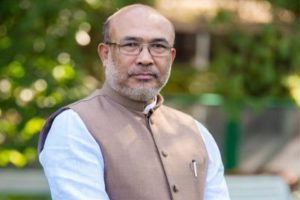A research team of students of IIT Madras has come out with a device named Nero which produces potable water from thin air. Three rivers flow through Chennai. The city gets between 1,300 mm and 1,400 mm of rainfall annually. Rainwater harvesting was made mandatory in Tamil Nadu quite early, but follow-up action was sorely missing. Spread over 402 sq km, the city is littered with water bodies, big and small. And it is located on the shores of the Bay of Bengal into which flows one thousand million cubic feet of water. In spite of these favourable points, the Chennai Metropolitan Water Supply and Sewerage Board is unable to quench the thirst of its citizens. Chief Minister Edappadi Palaniswamy dismisses the acute shortage of drinking water as an exaggeration by the media because the ministerial bungalows get more than their regular supplies without let or hindrance.
Even their extensive lawns and gardens remain ever green and lush. The tragedy is the people of the State are docile and the political leadership is lethargic. When Chennai faced a similar drinking water shortage in 1982, then Chief Minister MG Ramachandran toyed with the idea of shifting the capital situated in the extreme north-eastern corner of the State to a central place on the banks of the Cauvery.
Advertisement
Then Prime Minister Indira Gandhi convened an emergency meeting of the Chief Ministers of Maharashtra, Karnataka and Andhra Pradesh in Chennai and persuaded the three riparian States of the Krishna to contribute five tmcft of water each to be drawn from Srisilam dam in AP as a permanent solution to recurring shortage of Chennai’s drinking water supply. The three Chief Ministers readily agreed and signed an agreement to this effect. The responsibility of constructing a canal from Srisilam dam to Chennai through the arid Rayalaseema region was left to Tamil Nadu. Instead of doing that, the Tamil Nadu government chose an easy way out by digging a canal up to Kandaleru, a stormwater lake in neighbouring Chittoor district of Andhra Pradesh, which is able to supply one or two tmcft water in a year.
None of the signatories to the 1982 agreement in the presence of Indra Gandhi has gone back on it. It is the inability of the Tamil Nadu government to complete the Srisilam-Kandaleru link canal that stands in the way of Chennai getting an assured supply of 15 tmcft of Krishna water. It took Palaniswamy six years to lay the foundation stone for the 150 MLD plant. For the 400 MLD plant to become operational, the people of Chennai must wait indefinitely. The Metropolitan Water Supply Board is yet to appoint a project management consultant for the project. Such is the urgency the present Palanswamy government shows to the pressing problem of supplying drinking water to the capital city.











